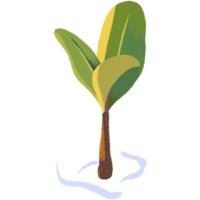On January 20, 2006, Cassandra Brooks flew from California to Chile’s southernmost tip. She boarded a ship to cross the infamous Drake Passage, often called the “worst ocean in the world,” where a 10-meter swell is considered normal.
Three days into her journey, she came out on deck one blustery morning at dawn. The dark waters were below freezing, and a frigid wind nipped her face. At that moment, she saw her first iceberg, a ghostly finger pointing skyward.
Cassandra fell in love with Antarctica right then.
Cassandra would go on to contribute mightily to efforts to preserve Antarctica’s icy beauty, performing field research there and working as an Antarctic policy advisor for international conservation organizations. In 2016, she helped create the Ross Sea marine protected area (MPA), the world’s largest such area and among the planet’s healthiest, most diverse, and most productive ecosystems.
These days, Cassandra lives in Boulder, Colorado, where she’s an assistant professor in environmental studies at the University of Colorado Boulder—but she’s still hard at work finding solutions to protect Antarctic and Arctic environments, with recent grants from the Pew Charitable Trusts and National Science Foundation. She also serves as science faculty for Homeward Bound, a global, women-in-science leadership initiative set against the backdrop of Antarctica.
So how did a little girl from rural New England end up as one of the most prolific experts on the southernmost landmass on the planet?
From forest to fieldwork
Cassandra grew up in northeast New Hampshire, one of five kids of a Polish immigrant mother and a father with French-Native American roots.
As an adult, she built on that foundation. Over the summers, she began studying clams and crabs and working at aquariums. After college, she rode fishing vessels, worked in fisheries, then eventually headed to California for her Ph.D.
Since then, Cassandra has combined marine science, environmental policy, and science communication to study urgent issues and encourage solutions. She has presented research at international conferences, participated in conservation commissions, and added film, podcasts, and writing into her repertoire, as well.
One of the most powerful of Cassandra’s media projects is 2012’s The Last Ocean, which won more than a dozen awards for its depiction of the Ross Sea. As an international outreach coordinator, Cassandra promoted Ross Sea protection in conjunction with the film. The Last Ocean was also where she met her future husband, photographer and filmmaker John Weller. Since then, the duo have worked together at the intersection of science and policy, publicity, and politics.
The journey wasn’t always easy. The ships setting sail for Antarctica are primarily steered by and staffed with men.
That will change soon, though: Cassandra just learned that she got a NASA grant for further Antarctic work, where all of the Principal Investigators are women.
Sea challenges
“We’re killing the ocean, but we’re dependent on it for the food we eat, the air we breathe, and our climate,” Cassandra says. “When we acknowledge that dependency—and we must acknowledge it—we’ll develop better policies to protect the oceans.”
Doing so may require scientists to hone new skills—emotional ones, she says.
Through gorgeous imagery and an authentic story, the public can also come to experience that love for wild, natural places, and maybe even replicate the experience Cassandra had aboard the ship, seeing Antarctica for the first time.
Cassandra even named her children after Antarctica’s treasures: her daughter Adélie for the Adélie penguins, and her son Orion Ross, for the Ross Sea MPA. Their names reveal Cassandra’s hopes for the planet, too:



